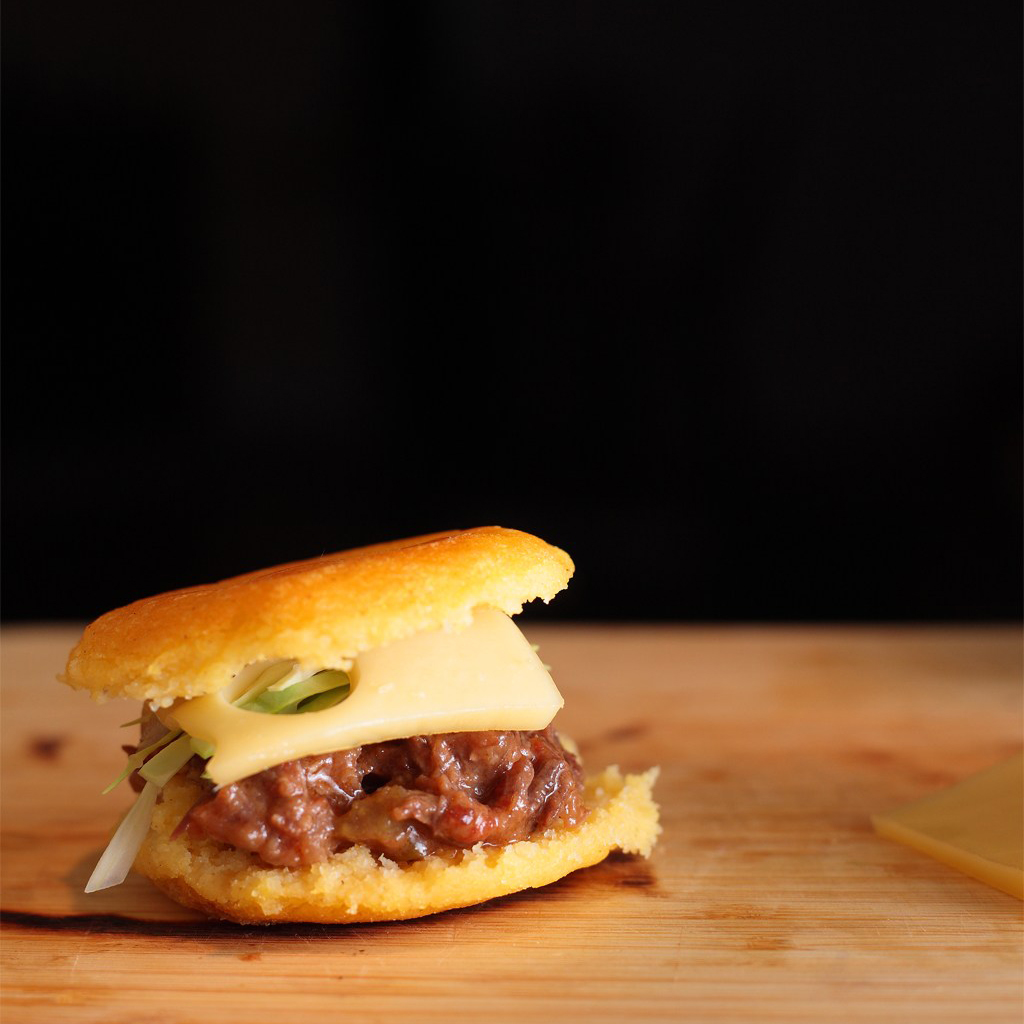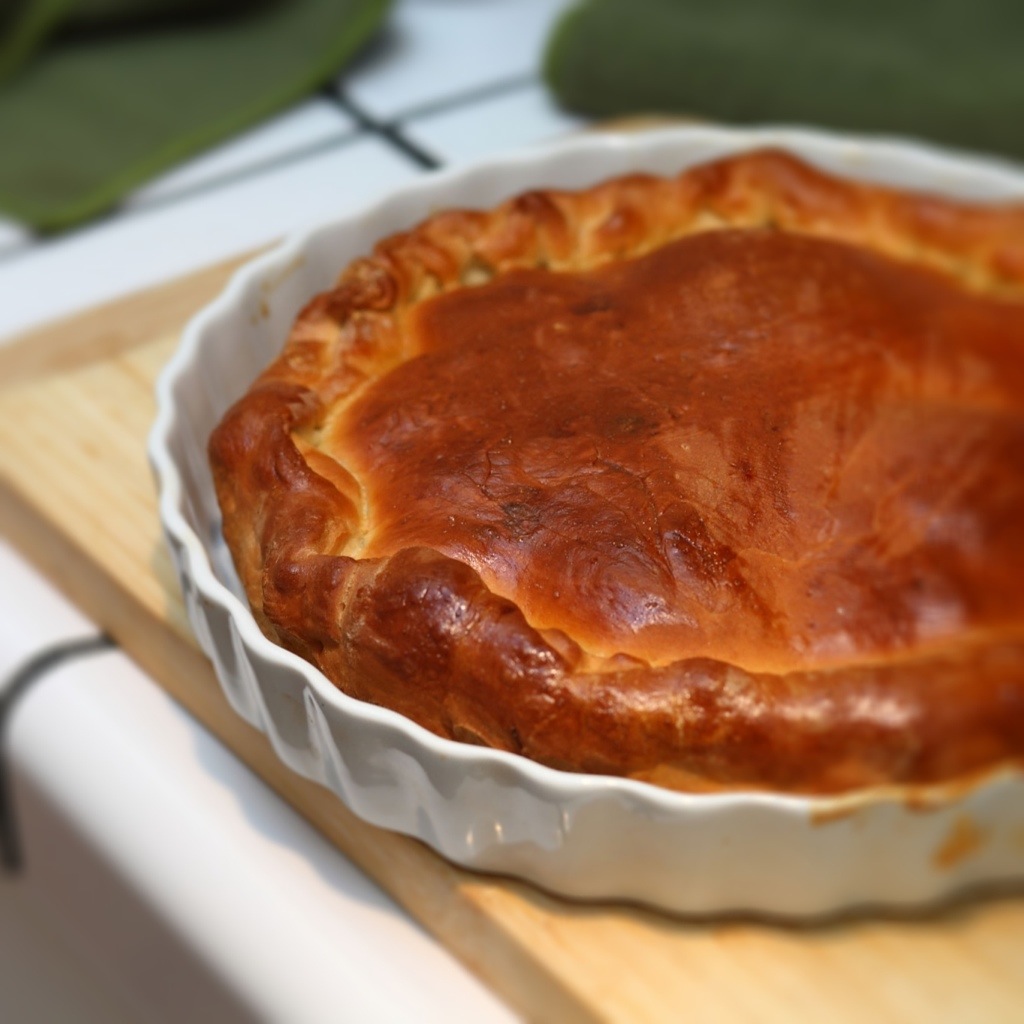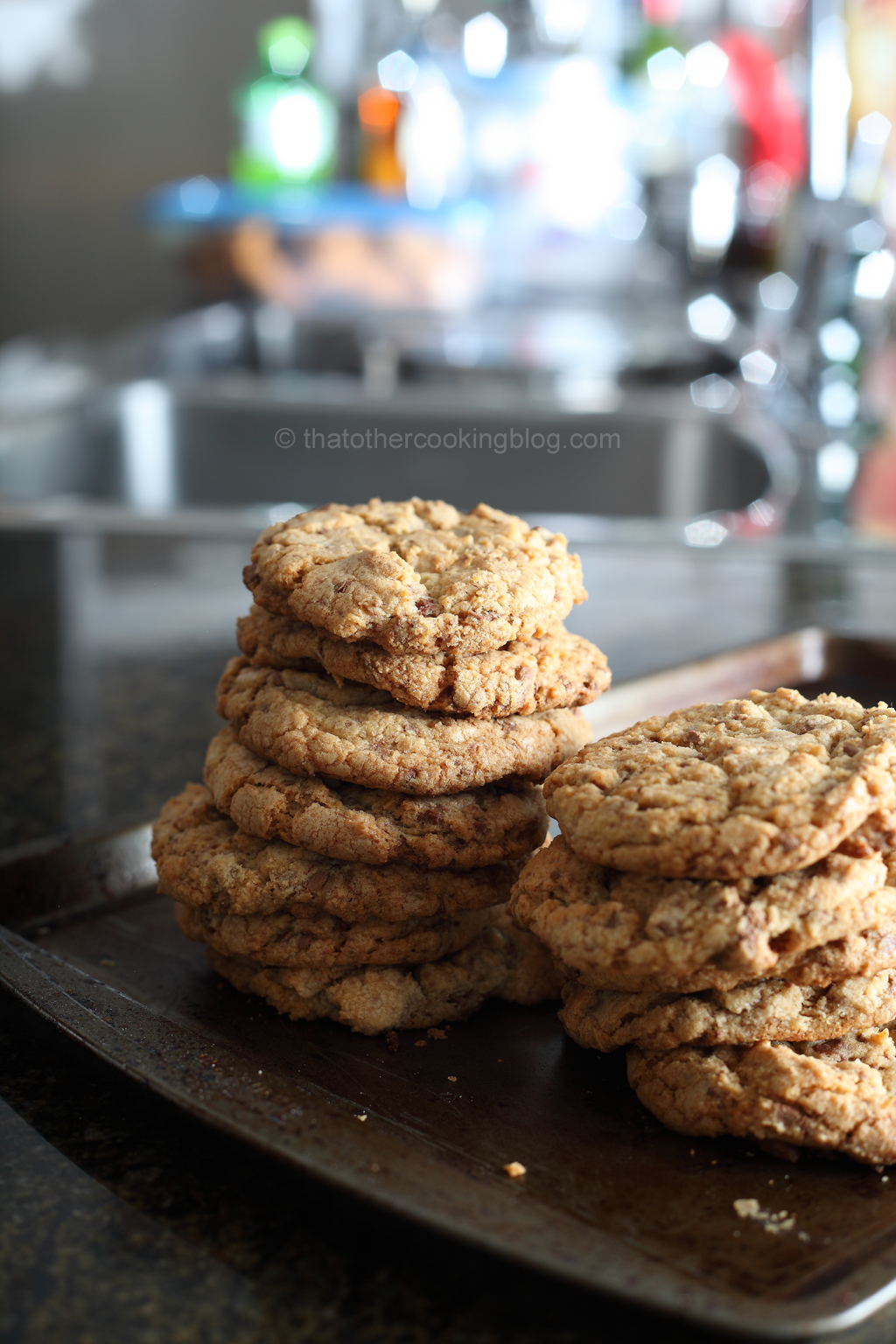I’ve posted about venezuelan arepas before. I’m venezuelan, so arepas are expected to appear on this blog every now and then. I have to say that only a few years ago I couldn’t make an arepa to save my life but after some practicing I’ve gotten better. If you are not familiar with these pre-cooked corn flour patties, let me tell you, you will be hooked once you try them. Very similar to pupusas, their salvadorian equivalent, arepas are eaten in venezuela pretty much during every meal.

They replace bread most of the time. Gluten free. These corn flour treats can be stuffed with.. well, I guess if it can be found in a sandwich, it can be found in an arepa plus a number of other ingredients not so common in sandwiches. Traditional recipes include, shredded beef (carne mechada), pork (cochino), stewed chicken, black beans, white cheeses like “guayanes” or “telita”, avocados, ham, roasted pork, mayo, butter.. I’ve seen people eat them with fruit jams (myself included)… the possibilities are endless.

In my previous post I prepared a beef stew, and I figured I could use leftovers for this arepa recipe, I’ve also added swiss cheese and chopped cabbage. This isn’t a usual arepa preparation but I’m sure it has been tried or at least some very similar take on it must have been proposed by somebody before this post. For my beef stew recipe please visit my simple stew recipe, which although simple to make packs incredible flavor. It has some asian cuisine components and it is delicious. The cabbage added extra crunch, texture and some lightness to the dish.

Ingredients:
Arepas:
1 cup of Harina pan.
1 cup of water
1/2 tsp kosher salt
1 tbs vegetable oil
1 tbs white wine vinegar (optional but try it)
Julienne some cabbage to taste.

Making arepas:
Making arepa dough is the simplest thing in the world once you know the ratios. Cornmeal soaks about its own volume in water give or take. So to one cup of cornmeal, you’ll need one cup of water. Place all the ingredients in a bowl and mix until everything is incorporated. The vinegar will balance the flavors of the stuffing. If you’re planning to use a fatty stuffing, like avocados, pork belly, or the stew in this recipe, a little acidity goes nicely with it. The oil will provide a bit of richness and will make the crumb a bit more … crumbly? It will also make the dough so that it won’t stick to your fingers when you shape it.
Now, this is key in making arepas. Allow a good 10-20 minutes for the cornmeal to hydrate. The mixture will seem watery at first, but after a few minutes, it will thicken up. The dough should feel soft to the touch and very pliable but with enough body to hold its shape. Don’t worry if you don’t get it right the first time, it took me some self-imposed training.
Scoop about 2 Tbsp of dough onto your hand. Shape it like a hamburger. This takes practice too. There are tools to make this but I learned the manual way, less gear = more counter space in the end and you can make them anywhere when you need to. The size of an arepa varies a lot. There’s no actual rule. Tiny ones the size of a dollar coin, big ones, 5 inches in diameter. I made them about 3-4 inches in diameter.
Try to keep the top and bottom sides as flat as possible for an even fry. Heat up a skillet with vegetable oil on medium-low heat. I used to rush this step, hight heat.. only to end up with burn spots on my arepas which I really don’t like. Medium-low, and enough oil to get an even sear. Some people deep fry them which is perfectly fine. I don’t have a deep fryer and deep frying in a pot is a bit messy in my opinion. You can also bake them over a properly seasoned cast iron skillet or “budare” which requires very little oil and renders a lighter arepa.
Cook until crusty and golden, about 3-5 minutes per side or longer if using a “budare”. Then remove from the skillet and place over absorbent paper before cutting open.
Then as you can imagine, slice the arepas open. Again, some people separate the top from the bottom entirely, some like to slice them into pockets, so the top and bottom are still connected but a sliver… suit yourself, doesn’t matter. Nobody is gonna judge you and most certainly not me. Some people even scoop out the internal stuff with the knife or a spoon and only eat the crusty crust, usually people on diets. Again, suit yourself.
Place a slice of swiss cheese over one side, a scoop of stew over the other, top with some shredded cabbage and go to town. There you have it. Arepas.

I’m saying goodbye to summer with this post. I might get a chance to sneak in a couple more entries before the 21st if I’m lucky but I will definitely try. Fall cooking is ahead of us and with that countless new kitchen adventures. Turkey day is the big day and it’s right around the corner. Time for me to start thinking about it! Maximizing turkey juiciness and flavor, and new dessert ideas too. New ways to get that gravy deliciousness amplified too, I’m sure we can do something about it! I gotta go now, I haven’t slept in like 3 weeks. Until the next post guys. Take care! Sharpen those knives.
Wanna get more sous-vide cooking guides and cool cooking how-to’s in your mailbox? You know what needs to be done!
We never spam. You should only be getting updates when new content is posted on the site. We also respect your privacy. We don’t share your email address with anyone and you can unsubscribe anytime!





12 comments
This is GREAT! I have never heard of arepas before. Now I am going to have to give this a try. Bookmarking and putting on Pinterest. THANK YOU!
Thanks Janet!!! I have to add the little “pin it” buttons for easy pinning 🙂
I love arepas and am so excited about this recipe. Venezolanos, watch ouT!
hahahahaha! 🙂
I’ve only had arepas once – and that was as a tiny measly portion in a south-american restaurant. looks like I’m going to have to give it a go again!
arepas in venezuela (the ones I know) are about the size of a hamburger, pretty decent size. The little ones are usually side dishes to something else, like a big grilled piece of tenderloin! 🙂
My cousins used to make arepa. And you take all the photos too???
where did they learn about arepas? and yes, I take the photos on this blog… im tired just by saying it hahahah
My cousins are half dominican, half puerto rican. But I think maybe they are originally from venezuela, no? (i see your title says venezuelan style but I don’t know where they originate)
Wow, great photos. Many talents here.
hey rico, thanks! I think arepas are colombian/venezuelan.. it probably gets lost in time is such an old invention, but you can find pretty much the same concept all over latin america.
These look great. I would so try to make these if I knew how to cook. I have a lot of Puerto rican friends that cannot get enough of these.
come on! you gotta give these a try. It’s extremely easy to make!!!